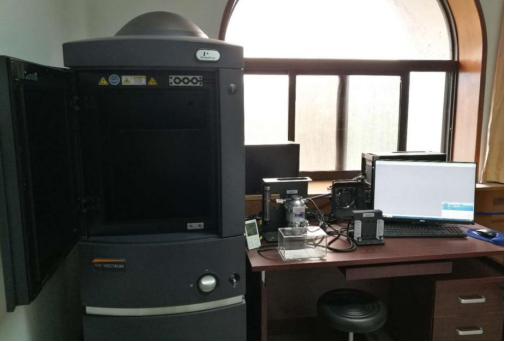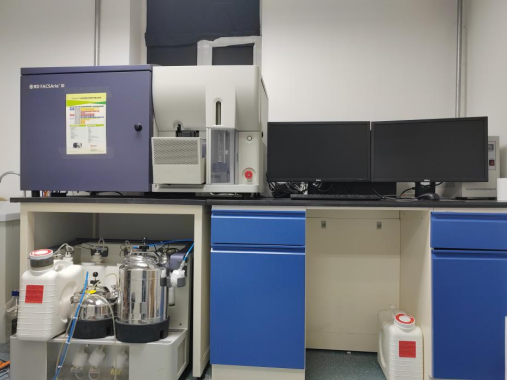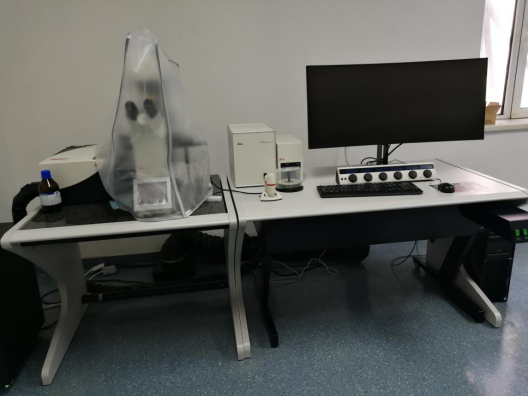Establishment and Development:
Neurosurgery Laboratory at Qilu Hospital of Shandong University was born from a shared vision and passion for developing prevention and treatment methods for neurological diseases. Recognizing the need for understanding of the pathogenesis of neurological diseases, our founders decided to establish a laboratory dedicated to study the pathogenesis of neurological diseases and interpret the brain's functions to provide new theories, new methods, and new technologies for clinical research. The journey of Neurosurgery Laboratory at Qilu Hospital of Shandong University began with research on glioma. With a small but dedicated team, we set out to establish a research laboratory that would be recognized for its excellence and impact. Since its inception, Neurosurgery Laboratory at Qilu Hospital of Shandong University has undergone a remarkable growth and development journey. We have expanded our team to include 11 provincial-level or above talents, one of which is National Top-notch Young Professional. Our research has evolved to address research on brain and brain-inspired science focuses on "brain interpretation, brain protection, brain simulation, brain control and reconstruction". Additionally, we have forged valuable collaborations and partnerships with neurosurgery centers in six countries, including the United States, Norway, and Australia, to enhance our research capabilities further. We established the "China-Norway Brain Research Center" with the University of Bergen in 2015. We invited more than ten world-leading experts in the field of neuroscience from both China and abroad, including Nobel Prize winner Professor Edvard Moser, "Norwegian King's Prize" winner Prof. Rolf Bjerkvig, as well as academicians of the Chinese Academy of Sciences Zhou Liangfu and Zhao Jizong, as guest or honorary professors.
Team Members:
Our team is composed of four Taishan Scholars of Shandong Province and 7 Young Experts of Taishan Scholars of Shandong Province, one of which is a National Top-notch Young Professional, four research assistants, three technicians, thirteen post doctors, and over 100 registered undergraduates, masters and PhD students. Together, they work tirelessly to study the mechanism, prevention and treatment of neurological diseases.

Research Areas:
Neurosurgery Laboratory at Qilu Hospital of Shandong University specializes in the mechanism of neuroimmune regulation in the occurrence and glioma development and its possible intervention targets, the molecular mechanism of cerebrovascular functional remodeling and possible intervention approaches, as well as research on the molecular pathology of neuromuscular diseases and degenerative diseases.
Research Achievements:
We have made significant contributions in interpretation of mechanisms and development of diagnostic and treatment methods for neurological diseases. We have undertaken over 50 National Natural Science Foundation projects and more than 50 major projects at the provincial and ministerial levels, with annual research funding exceeding 10 million yuan.
We have received more than 80 awards, including the second and third prizes of the National Science and Technology Progress Award nominated by the Ministry of Education; the first, second, and third prizes of the Shandong Province Science and Technology Progress Award; the Chinese Medical Science and Technology Award, and the Top Ten Scientific and Technological Achievements of Shandong Province. We have published around 50 SCI-index papers annually, with an average impact factor exceeding 5, and participated in formulating industry standards, domestic consensus, and domestic guidelines. We have been granted 29 patents approved in the past five years, 4 of which have been translated into clinics.
Main Publications:
10 selected publications
1. Wenhan W, Keyi L, Bowei X, et al. Piezotronic effect for in situ electrostimulation of neural stem cell therapy for nerve injury[J]. Nano Energy, 2024, 120: 109181-.
2. Rigg E, Wang J, Xue Z, et al. Inhibition of extracellular vesicle-derived miR-146a-5p decreases progression of melanoma brain metastasis via Notch pathway dysregulation in astrocytes[J]. J Extracell Vesicles, 2023, 12(10): e12363.
3. Sun Y, Mu G, Zhang X, et al. Metabolic Modulation of Histone Acetylation Mediated by HMGCL Activates the FOXM1/β-catenin Pathway in Glioblastoma[J]. Neuro Oncol, 2023.
4. Wang W, Duan J, Ma W, et al. Trimanganese Tetroxide Nanozyme protects Cartilage against Degeneration by Reducing Oxidative Stress in Osteoarthritis[J]. Adv Sci (Weinh), 2023, 10(17): e2205859.
5. Zide W, Huimin G, Yuqi Z, et al. Lymph node-inspired immunoregulatory hydrogel with siRNA delivery property for postoperative glioblastoma treatment[J]. Chemical Engineering Journal, 2023, 476.
6. Pan Z, Zhao R, Li B, et al. EWSR1-induced circNEIL3 promotes glioma progression and exosome-mediated macrophage immunosuppressive polarization via stabilizing IGF2BP3[J]. Mol Cancer, 2022, 21(1): 16.
7. Li B, Chen X, Qiu W, et al. Synchronous Disintegration of Ferroptosis Defense Axis via Engineered Exosome-Conjugated Magnetic Nanoparticles for Glioblastoma Therapy[J]. Adv Sci (Weinh), 2022, 9(17): e2105451.
8. Ji J, Ding K, Luo T, et al. TRIM22 activates NF-κB signaling in glioblastoma by accelerating the degradation of IκBα[J]. Cell Death Differ, 2021, 28(1): 367-381.
9. Han M, Wang S, Yang N, et al. Therapeutic implications of altered cholesterol homeostasis mediated by loss of CYP46A1 in human glioblastoma[J]. EMBO Mol Med, 2020, 12(1): e10924.
10. Wang J, Qi Q, Zhou W, et al. Inhibition of glioma growth by flavokawain B is mediated through endoplasmic reticulum stress induced autophagy[J]. Autophagy, 2018, 14(11): 2007-2022.
Facilities & Resources:
Our state-of-the-art facilities and cutting-edge technology enable us to conduct rigorous and innovative research. We boast Leica laser scanning focus microscope, BD flow cytometer, IVIS Spectrum small animal live imaging system, biomolecule interaction detection system, live cell dynamic imaging and analysis system, depth Learning server, cryo-serial image acquisition system, EEG/event-related potential analysis systems and ultracentrifuges, etc.




Collaborations & Partnerships:
We believe in the power of collaboration. That's why we have forged partnerships with Theodore Berger and Dong Song from University of Southern California; Rolf Bjerkvig, Frits Thorsen, Hrvoje Miletic, et al from University of Bergen; Thomas Daubon from University of Bordeaux; Barbara Klink from National Genetic Center of Luxembourg; Xiuying Wang from University of Sydney; Xinmin Li from University of Alberta to further advance our research.
Recreational Activities:
Birthday celebrations, year-end gatherings, mountain climbing and other outdoor activities, Teachers' Day celebrations, Mid-Autumn Festival, Spring Festival and other traditional festival celebrations
Other Features:
The scientific research team of the laboratory is composed of outstanding scholars from different disciplinary backgrounds. Together, we are committed to innovative research in brain function reconstruction. The laboratory has advanced scientific research equipment and instruments, providing good experimental conditions for researchers. At the same time, the laboratory actively cooperates and exchanges with well-known scientific research institutions and enterprises locally and abroad, continuously introduces advanced scientific research results and technologies, and promotes the continuous improvement of the laboratory's scientific research level and innovation capabilities.
Contact:
For more information or inquiries, please contact us at mailto: hb@sdu.edu.cn or visit our website at www.brain.sdu.edu.cn.